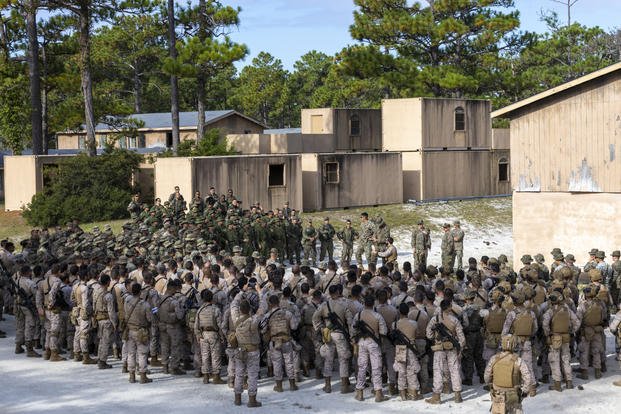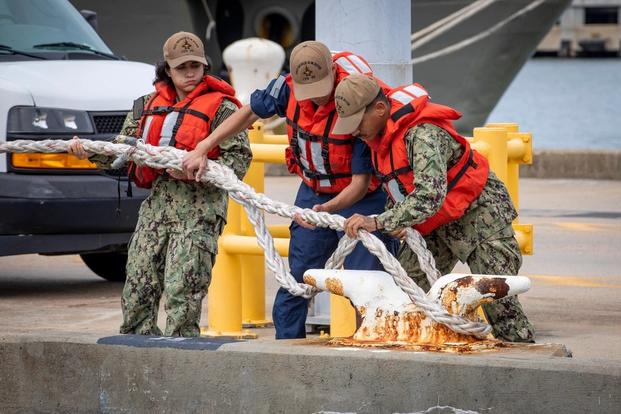The U.S. Marines are charging into the 66th iteration of UNITAS, the world's longest-running multinational maritime exercise. The exercise kicked off on Sept. 15, 2025, aboard the Corps’ premier east coast training destination - Camp Lejeune, North Carolina. UNITAS LXVI is a powerful opportunity to exercise multinational interoperability capabilities; with over 2,000 Marines joining forces with servicemembers from 25 partner nations to sharpen their edge in amphibious warfare and regional security.
A Pivotal Shift
From a Marine Corps perspective, UNITAS 2025 represents a pivotal shift. For the first time in its storied history, the exercise's amphibious phase is anchored at a major Marine installation like Camp Lejeune, rather than traditional South American venues. This home-field advantage allows for unprecedented scale, with LtGen Leonard F. Anderson IV, commander of Marine Forces South (also known as MARFORSOUTH) and Marine Forces Reserve, emphasizing its transformative potential. "UNITAS is a premier event for us to train alongside our allies and partners in a combined force," Anderson said. "This year’s exercise will help us become a more integrated naval expeditionary force with the U.S. Navy and build upon the amphibious and littoral combat power of all the participants. I am extremely proud of the work that went into the largest known UNITAS that we also have the pleasure to host."
Collaboration is the crux of this year's event. Marines are teaming up with counterparts from Argentina, Brazil, Belize, Colombia, Chile, the Dominican Republic, Ecuador, El Salvador, Guatemala, Honduras, Mexico, Morocco, Paraguay, Peru, and Spain for the amphibious portion alone. These partnerships help the countries build shared tactics and techniques. For instance, U.S. Marines with the 2nd Reconnaissance Battalion conducted close air support training alongside Brazilian Marines, honing tactical skillcraft and fostering trust and seamless communication in high-stakes scenarios.

Urban warfare remains a top training event as well. Marines from 2nd Battalion, 2nd Marine Regiment, along with partner nation Marine forces, conducted patrols at urban training environments aboard Camp Lejeune. Tactical exercises like these add realism, with Marines and allies coordinating synchronized assaults. Training like this helps to showcase MARFORSOUTH's role as the U.S. Southern Command's Marine component, focused on deterring threats across Central America, South America, and the Caribbean through rapid crisis response and capacity-building in realistic scenarios.
Integrating Technology
A standout highlight is the integration of cutting-edge technology, spotlighting innovations from the Marine Corps Warfighting Laboratory. Marines with the Maritime Distribution Platoon, 2nd Distribution Support Battalion, 2nd Marine Logistics Group (or “MLG”), are experimenting with the Autonomous Low-Profile Vessel (ALPV) - a stealthy, 55-foot unmanned surface craft designed for expeditionary advanced base operations (or “EABO,” a key requirement of Marine Corps Force Design 2030). During UNITAS, the 2nd MLG is partnering with MCWL to test the ALPV's refueling and logistics capabilities, lowering it into the surf at Camp Lejeune for real-world trials. This low-signature vessel, capable of hauling supplies, weapons, or even Naval Strike Missiles across contested waters, enhances agility and survivability in littoral environments. Marines are therefore using UNITAS 2025 as a chance to push the envelope on unmanned systems to make logistics more lethal and resilient. ALPV operations can integrate with unmanned air and submarine assets for a multi-domain edge, representing how Marines can collaborate internally and with partners to redefine maritime sustainment, drawing lessons that could ripple beyond SOUTHCOM to other theaters (such as INDOPACOM).

In an era of great-power competition, UNITAS 2025 reaffirms the Marine Corps' commitment to hemispheric unity while showcasing a full-spectrum demonstration of littoral combat power. By operating in realistic, crisis-like scenarios, participants deter aggression and bolster collective response capabilities. As Anderson put it, this integration forges a "more integrated naval expeditionary force." For the Marines of MARFORSOUTH, it is more than just training; it's the forge where alliances are tempered into unbreakable steel, ensuring peace and security across the Americas.
















